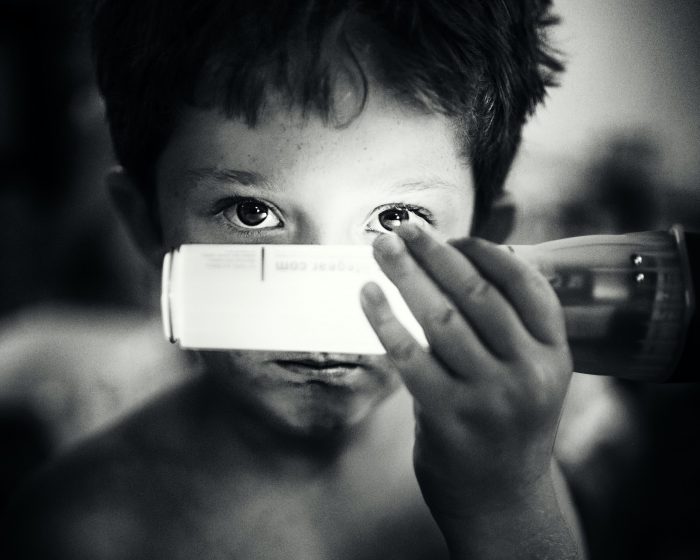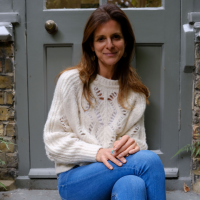Forget books—I get the best parenting advice in the world from my patients.
Almost all of them are healing wounds handed down from their mothers.
I had my first child before I worked on myself and before I trained for this line of work. I suffered from postnatal depression and felt as if my entire world had imploded.
I remember driving home from the hospital feeling terrified of going home with this little baby. I wanted to scream out of the window at people walking in the street, “How can you all be getting on with your lives as nothing has happened—can’t you see the world has changed?”
This was a difficult time for me. My family lived miles away, and I felt so ashamed of the fact that I found everything so difficult. I simply felt as if I couldn’t reach out to any friends. I felt isolated, alone, and like I had reached an all-time low.
I have learned in the last eight and a half years since I have had my first child, that in order for children to thrive grow into fully functioning, emotionally whole adults, they need a pretty optimum level of mothering.
How do I know this for sure?
When I do trauma work with my patients, we are healing the deepest of wounds. These wounds are generally around the mother and a part of that healing involves a restructuring of what actually happened at the time (the not-so-good thing), into what we would have liked to have happened in the first place.
This restructuring is not orchestrated by the therapist—it comes directly from my patients.
During an EMDR therapy session, after we have released the feelings associated with the trauma, my patients organically recreate the scene as it should have happened.
If not, I might say to a patient, “What does the three-year-old (four, five, six, seven-year-old) you need now at this moment?”
They’d tell me:
“I need a hug.”
“I need a mom who I feel safe with.”
“I need help clarifying a situation and I’m confused.”
“I need someone who looks at me lovingly and wants to understand me.”
“I need parents who understand and prioritize the importance of love.”
The brain is elastic (thank you neuroplasticity research).
Our body temperature strives to stay at 98.6 degrees and a cut on our arm will heal naturally if we leave it alone. Our brains and our synaptic networks are continually on a mission to get back to their baseline as well.
Our brains are just like our bodies, constantly striving for homeostasis.
When we have trauma, there is a stickiness that prevents homeostasis.
Once we have successfully released the stickiness by setting the feelings free, the brain is able to return to homeostasis; it knows exactly what it needs in order to get there.
What I have come to realize, from working with my patients and their trauma every day, is that our brain strives for a baseline of homeostasis of one simple and vital element for optimum functioning.
That element is one of pure love.
It is pure love that we need as children, enough of the time, in order that we don’t suffer emotional trauma.
This is the optimum level of parenting that I refer to—it is one of pure, unconditional love.
What could this look like in a practical sense?
Let’s make it simple and think of four essential S’s:
Seen
Soothed
Safe
Secure
Forget our offspring for a moment, let’s first see if we received the four S’s when we were young.
Seen: we were seen for who we are as individuals rather than just a sibling, offspring, or family member. Did our mothers take the time to connect with us on an individual level, despite their differences?
Soothed: we were physically and emotionally held while being calmed when we are distressed.
Safe: did we feel emotionally and physically safe? If we were regularly soothed, and if we felt connected on a deep level, for exactly who we were as individuals, then we probably felt emotionally safe. Feeling physically safe refers to not being abused (smacked, beaten, or witnessing other household members being abused as well).
Secure: did we have a sense of security that our home provided for us?
Of course, attachment trauma can occur from both mother and father (and any other significant adults from our childhood), but from my practice as a trauma therapist, I can tell you—hand on heart—that the majority of the trauma that children suffer from comes straight from mom. It is certainly the deepest and most painful.
How can we prevent this cycle from being repeated?
If we didn’t receive the four essential Ss in our childhood, then we need to either give them to ourselves or have someone else give them to us.
We need to feel them too.
We need to feel safe, seen, soothed, and secure enough of the time. Our cup must be full enough so we can give the same to our children.
Some of us will have received enough of the S’s in our childhood to be alright. But the majority of us will be lacking—just as our mothers before us.
So often, as mothers, we feel isolated and alone. We cope and struggle with sleep-deprivation and try to juggle so much all on our own.
It’s pretty hard to deliver the four essential Ss optimally to our children under the stressful circumstances that many of us face unless we have a higher level of self-awareness—and even then it’s not easy.
I am lucky. Every day, as my patients are mending their broken hearts, year after year, I learn yet another way in which I can parent my children from a place of pure unconditional love.
I am not in any way perfect and lord knows—having a perfect mother would generate its own set of traumas.
My patients are my greatest teachers.
It takes a village to raise a child. It also takes a village to look after a mom and for us mothers to receive the four essentials Ss.
Yes—if we go into serious trauma therapy, we can heal all of our wounds and consequently feel seen, soothed, safe, and secure within ourselves.
In the meantime, let’s help each other along the way.












Read 15 comments and reply